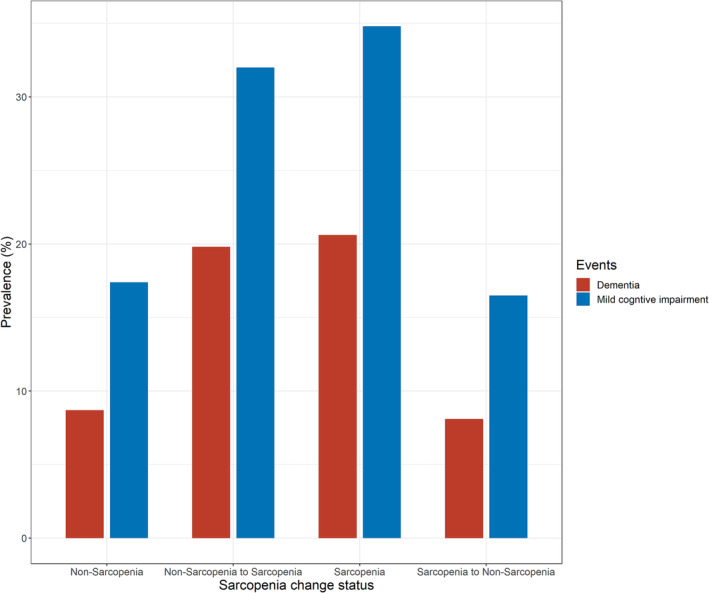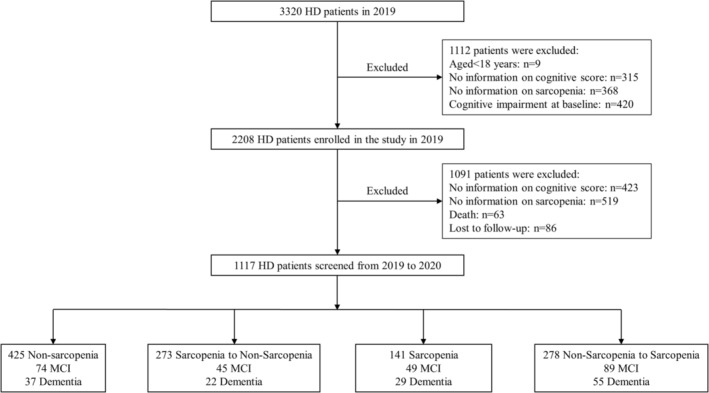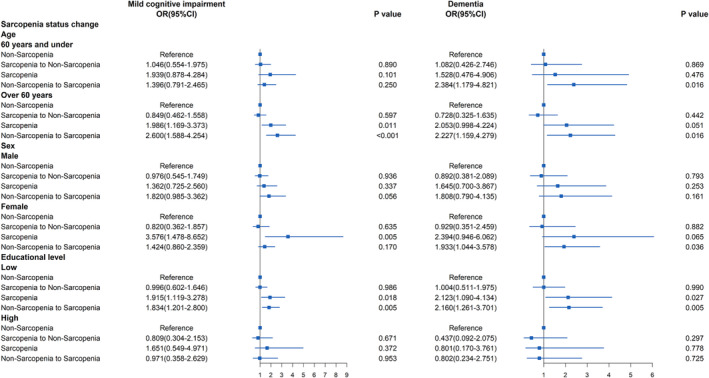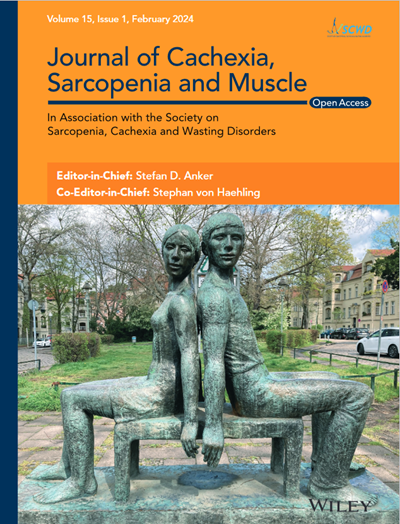Our study aimed to evaluate change in sarcopenia, its defining components over 1 year follow-up and investigate associations with subsequent cognitive decline, incident mild cognitive impairment (MCI) and dementia among patients undergoing haemodialysis (HD).
In the multicentre, longitudinal study, 1117 HD patients aged 56.8 ± 14.3 years (654 men; and 463 women) from 17 dialysis centres in Guizhou Province, China, were recruited in 2019 and followed up for 1 year in 2020. Sarcopenia was diagnosed with Asian Working Group for Sarcopenia criteria using appendicular skeletal muscle mass index (ASMI) and handgrip strength (HGS). Body composition was measured using body composition monitor; body water, weight, and height were corrected to calculate ASMI. HGS was measured by mechanical handgrip dynamometer. Cognitive function was measured with Mini Mental State Examination. Multivariate linear, logistic regression models and subgroup analyses were employed to examine the associations of changes in sarcopenia, ASMI, and HGS with Mini Mental State Examination score change, and incident MCI, dementia.
Four hundred fourteen (37.1%) patients had sarcopenia at baseline; during 1 year follow-up, 257 (23.0%) developed MCI and 143 (12.8%) developed dementia. According to changes in sarcopenia, patients were stratified into four groups: non-sarcopenia; non-sarcopenia to sarcopenia; sarcopenia; and sarcopenia to non-sarcopenia. HD patients in sarcopenia and non-sarcopenia to sarcopenia groups had higher risk of MCI (34.8%, 32.0%, vs. 17.4%) and dementia (20.6%, 19.8%, vs. 8.7%), compared non-sarcopenia group (P < 0.001). Multivariate linear regression analyses showed that sarcopenia [regression coefficients (β) −1.098, 95% confidence interval (CI) −1.872, −0.324, P = 0.005] and non-sarcopenia to sarcopenia (β −1.826, −2.441, −1.212, P < 0.001) were associated with faster cognitive decline compared to non-sarcopenia. HGS decline (β 0.046, 0.027–0.064, P < 0.001) and ASMI decline (β 0.236, 0.109–0.362, P < 0.001) were both positively associated with cognitive decline. Multivariate logistic regression analyses demonstrated that patients with sarcopenia and non-sarcopenia to sarcopenia were both at increased risk of developing MCI [odds ratio (OR) 1.788, 95% CI 1.115–2.870, P = 0.016 and OR 1.589, 95% CI 1.087–2.324, P = 0.017, respectively], but only non-sarcopenia to sarcopenia was at increased risk of dementia (OR 1.792, 95% CI 1.108–2.879, P = 0.017). Both greater change of ASMI and HGS had lower risk of MCI with adjusted ORs of 0.857 (0.778–0.945, P = 0.002) and 0.976 (0.963–0.989, P < 0.001). Robust associations were found among female individuals, aged >60 years, and with low educational level.
Longitudinal associations were observed between new-onset, persistent sarcopenia, and cognitive impairment. Early detection and intervention should be implemented to delay the onset of sarcopenia and improve cognitive health among HD patients.






